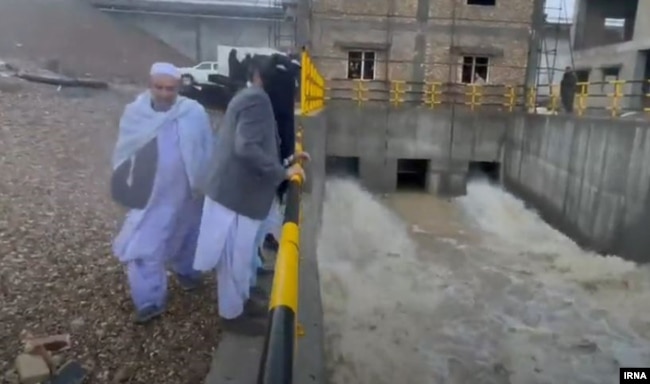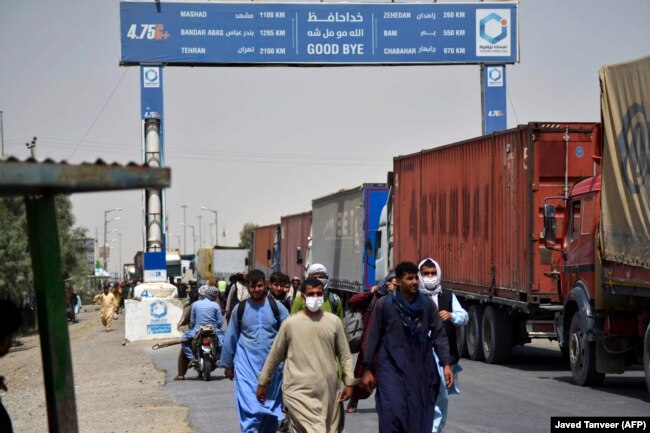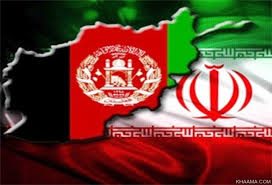RFL/RE – Iran helped the United States topple the Taliban’s brutal regime in Afghanistan in 2001.
But more than 20 years later, after U.S. forces withdrew from Afghanistan and the Taliban regained power, the once sworn enemies have become allies.
Differences remain between Afghanistan’s Sunni Taliban rulers and Iran’s Shi’ite clerical regime. Tehran, like the rest of the international community, has yet to recognize the Taliban regime. Clashes have also erupted between Taliban fighters and Iranian security forces along the countries’ 900-kilometer border.
But there has also been growing economic and political cooperation between the sides, which have both been hit by U.S. sanctions.
In the latest sign of deepening ties, the Taliban released water from the Kamal Khan Dam in southwestern Afghanistan into Hamun Lake in southeastern Iran, a poor and arid region.

Experts say the move is part of the Taliban’s attempt to curry favor with Iran, a major trade partner and regional power. Disputes over the distribution of cross-border water supplies have plagued relations between the two neighbors for decades.
“Overall, Iran needs a stable, if also dependent, Afghanistan and the Taliban a nonthreatening, economically cooperative neighbor,” says Marvin Weinbaum, the director of Afghanistan and Pakistan studies at the Middle East Institute think tank in Washington.
In the 1990s, Iran and the Taliban were on the verge of war after the deaths of eight Iranian diplomats in the Afghan city of Mazar-e Sharif.
Tehran backed the anti-Taliban Northern Alliance before the U.S.-led invasion. But in recent years the Islamic republic and the Taliban forged ties, with militant leaders even visiting Tehran. Experts say Tehran also provided some military support to the Taliban, which waged a 20-year insurgency against foreign forces and the Western-backed Afghan government.
Weinbaum says Iran and the Taliban, united for years in their opposition to the U.S. military presence in Afghanistan, have room for broader cooperation since the militant group’s takeover in August.
‘Strategic Gain’
In recent years, Afghanistan looked to harness the potential offered by its water resources by building hydroelectric dams and irrigation systems. But the projects flared tensions with neighboring countries that depend on the same supply.
Iran and Pakistan alleged that the infrastructure projects would cause humanitarian upheaval. Kabul, meanwhile, accused the two countries of orchestrating violence in the country to hold up its water projects.
The Taliban’s decision to release water from the Kamal Khan Dam in Nimroz Province, which neighbors Iran’s Sistan-Baluchistan Province, was applauded by officials in Tehran.

Hassan Kazemi Qomi, Iran’s special representative to Afghanistan, publicly thanked the Taliban for “sticking to their promises in releasing water from Kamal Khan Dam.”
The move came just days after the Taliban’s Foreign Minister Amir Khan Muttaqi on January 9 led a senior delegation to Tehran, where he held talks with Iranian officials.
During the visit, Iranian officials also mediated talks between the Taliban and key Afghan resistance figures Ahmad Masud and Ismail Khan. Masud is the head of the National Resistance Front of Afghanistan, which groups opposition forces in northern Afghanistan.
Amin Tarzi, director of Middle East studies at the Marine Corps University in Virginia, says cooperation over water resources is a win-win for both Tehran and the Taliban.
“Iran would consider it as a strategic gain should they get access to the water and barter it with Afghanistan for oil, gas, or electricity, which Iran produces in excess,” he told RFE/RL.
‘Water Was Intentionally Released’
Water from the 1,150-kilometer Helmand River, Afghanistan’s longest, feeds the Hamun Lake in Iran’s Sistan-Baluchistan, a volatile province where separatists and militant groups operate. The region relies heavily on the lake and has suffered a major ecological crisis because of persistent water scarcity.
The Taliban’s decision to increase water flows into Iran prompted outrage among many Afghans.
Following the uproar, the Taliban’s Water and Energy Ministry denied that water from the Kamal Khan Dam had been released into Iran.
“Farmers living around the Kamal Khan Dam and officials in Nimroz have constantly been demanding for that water to be released,” said Mawlawi Akhtar Mohammad Nasrut, the ministry’s spokesman, in a video message on January 19. “The dam’s reservoir was full, and our farmers needed water.”
But locals rejected those claims.
Many parts of Afghanistan have witnessed above-average winter rainfall, which has minimized the need for irrigation.
A farmer in Nimroz, who spoke to RFE/RL’s Radio Azadi on condition of anonymity for fear of retribution, said “the water was intentionally released to flow into Iran.”

Naeem Salarzai, an exiled Afghan water management specialist, says the Taliban should persuade Iran to respect a 1973 water-sharing treaty between the two countries.
“The Taliban should immediately stop water flowing into Iran if they did so in response to Iranian demands,” he told Radio Azadi.
Tehran has accused successive Afghan governments of taking more than its fair share of water allocated by the treaty.
Conversely, many Afghans suggest that decades of war in Afghanistan have allowed Iran to exploit their country’s resources.
Afghans widely celebrated the completion of the Kamal Khan Dam last March. Former President Ashraf Ghani said Afghanistan would no longer “give away free water” and suggested Iran should provide oil to Afghans in exchange for water.
Fazal Hadi Wazeen, an Afghan political analyst, says the Taliban is using water as a diplomatic tool.
“They are using the water from the Kamal Khan Dam to improve relations with an important neighbor,” he told Radio Azadi.
- Abubakar SiddiqueAbubakar Siddique, a journalist for RFE/RL’s Radio Azadi, specializes in the coverage of Afghanistan and Pakistan. He is the author of The Pashtun Question: The Unresolved Key To The Future Of Pakistan And Afghanistan.
 Shabtabnews In this dark night, I have lost my way – Arise from a corner, oh you the star of guidance.
Shabtabnews In this dark night, I have lost my way – Arise from a corner, oh you the star of guidance.



